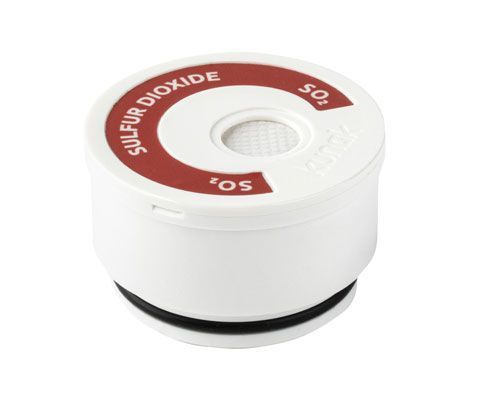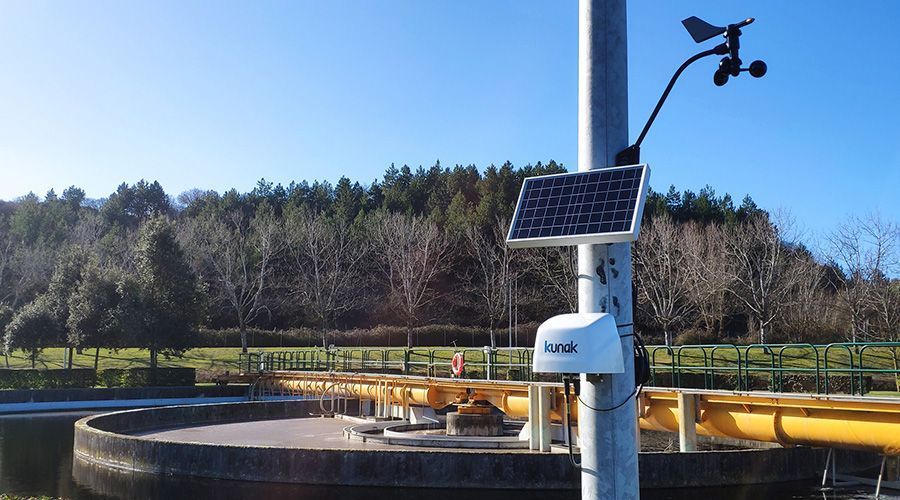Sulphur dioxide
Reliable real-time
data on SO2
SENSOR-BASED | BEST AVAILABLE ACCURACY

Where is it found?
Sulfur Dioxide (SO2) is invisible and has a nasty smell. It is produced by the combustion of any substance that contains sulfur. The main source of SO2 in the atmosphere comes from the combustion of coal or fossil fuels while small sources are in metallurgy and naturally by volcanic eruptions.
Locomotives, ships and other vehicles that burn fuel with a high sulfur content are other emission sources. Besides, it can react with other compounds in the atmosphere contributing to particulate matter pollution.
Why is it harmful?
SO2 gas is a respiratory tract and eye irritant that affects very fast to humans (10-15 minutes). Long exposures affect lung defences and aggravate the existing cardio vascular disease.
It also causes damage to ecosystems and it contributes to acid rain when oxidized to sulfuric acid. This provokes acidification of ecosystems, injuries and necrosis in vegetation and deterioration of materials.
SO2 cartridge
The sulphur dioxide cartridge has a built-in electrochemical sensor which presents high cross-sensitivities with O3, NO2 and CO. When used together with the NO2, O3 and CO cartridges, the Kunak algorithm can correct these cross-sensitivities, improving the accuracy of the measurements. However, it is not recommended for applications requiring accurate SO2 measurements at very low concentrations (<20 ppb).
Technical specifications
- Measurement range: concentration range measured by the sensor.
- Resolution: smallest unit of measurement that can be indicated by the sensor.
- Operating temperature range: temperature interval at which the sensor is rated to operate safely and provide measurements. (**) In PM sensor Type A: -40 to 50ºC with heater (more information on this version on request).
- Operating RH range: humidity interval at which the sensor is rated to operate safely and provide measurements.
- Recommended RH range: Recommended relative humidity range for optimal sensor performance. Continuous exposure outside the recommended range may damage the cartridge.
- Operating life: time period during which the sensor can operate effectively and accurately under normal conditions.
- Guarantee range: concentration range covered by Kunak's guarantee.
- LOD (Limit Of Detection): measured at laboratory conditions at 20ºC and 50% RH. The limit of detection is the minimum concentration that can be detected as significantly different at zero gas concentration, calculated according to the Technical Specification CEN/TS 17660.
- Repeatability: measured at laboratory conditions at 20ºC and 50% RH. Closeness of the agreement between the results of successive measurements of the same measure carried out under the same conditions of measurement, calculated according to the Technical Specification CEN/TS 17660.
- Response time: time needed by the sensor to reach 90% of the final stable value.
- Typical precision - R2: statistics obtained between the device hourly measurements and reference instruments in field test between -10 to +30ºC at different locations. (*) For the type B PM sensor, the expected error for PM10 is higher in presence of coarse particles.
- Typical accuracy: for criteria pollutants is the average Mean Absolute Error (MAE) obtained between the device hourly measurements and reference instruments for 1 to 8 months field test between -10 to +30ºC in different countries. For other pollutants is the expected error of the measurement at the reading.
- DQO-Typical U(exp): Data Quality Objetive expresed as the Expanded Uncertainity in the Limit Value obtained between the device hourly measurements and reference instruments for 1 to 8 months field test between -10 to +30ºC in different countries, calculated according to the European Air Quality Directive 2024/2881 and from the Technical Specification CEN/TS 17660. (*) For the type B PM sensor, the expected error for PM10 is higher in presence of coarse particles.
- Typical intra-model variability: calculated as the standard deviation of the three sensor means in 1 to 8 months field test between -10 to +30ºC in different countries.
A, B, C, D superindex: the super indexes refer to different types of cartridges related to the same target pollutant but with different technical specifications.


